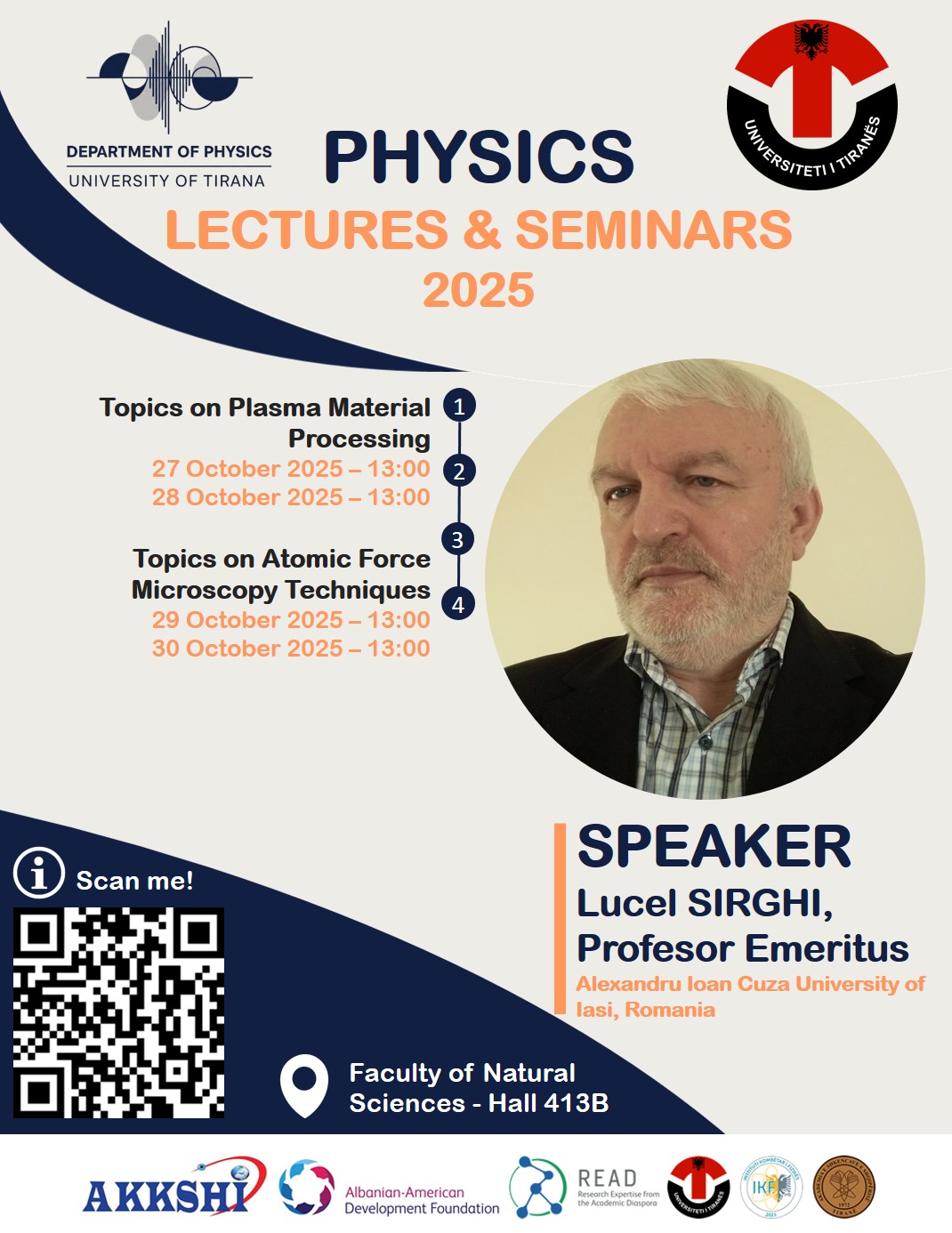Erasmus Staff Mobility for Teaching
Prof. Lucel Sirghi
Faculty of Physics
Alexandru Ioan Cuza University of Iasi
Lucel Sirghi is currently professor emeritus at Department of Physics of Alexandru Ioan Cuza University of Iasi, Romania. He obtained the bachelor degree in physics in 1983 and PhD degree in plasma physics in 1997 at Alexandru Ioan Cuza University. His main research interests are in applications of plasma in material processing, including synthesis of thin films and nanomaterials, nanofabrication and nanotechnology. He published more than 80 papers that have received over 2000 citations with a Hirsh index of 26. He has a reach research activity abroad including various research stages at Nagoya University, Shizouka University, Georgia Institute of Technology (Atlanta, USA), Institute of Health and Consumer Protection (European Commission Research Joint Center, Ispra, Italy).
Plasma Material Processing
Matter is we usually regarded in the form of solids, liquids, and gases. But there's a fourth, often overlooked state that dominates the universe: plasma. Unlike the other states, plasma is not commonly encountered in everyday life. Plasma is a hot, ionized gas consisting of free electrons and ions-atoms that have lost or gained electrons and can be obtained by electric discharges in gases. Plasma material processing is a well established field of science and technology that uses the energetic plasma particles to manipulate surfaces, fabricate microstructures, kill bacteria, destroy viruses, and drive chemical reactions that traditional methods simply can’t achieve. In the recent years, many wet chemistry techniques used for material processing were replaced with more ecologic plasma material processing techniques. This course introduces basic knowledge of plasma properties, plasma sources and plasma material processing techniques illustrated with some of interesting research results obtained by the lecturer.
Atomic Force Microscopy Techniques
Imagine being able to "feel" the surface of a material at the atomic level. That is what Atomic Force Microscopy (AFM) is capable of, a powerful microscopy technique that lets scientists and engineers explore the nanoscale world with astonishing precision. Atomic Force Microscopy started almost 40 years ago with scanning tunneling microscopy for getting microscopic 3D images with atomic resolution of conductive surfaces and developed continuously with new techniques. In this technique, high resolution 3D topography images are obtained by scanning of a surface with a very sharp tip (typically 10 nm in curvature radius) under a constant contact force (typically, few nN). This course introduces and gives practical information on the use of these AFM techniques and is based on the experience and expertise acquired by the lecturer in 25 years of research activity in this research field.


